Democratizing =(?) Innovating
The 2012 Biennale was yet another indication that the fantasies of an Architecture by the “People” for the “People” enabled by a resilient infrastructure of -often self-proclaimed- scientific methods, communication, design and fabrication technologies are returning in the collective architectural imaginary, carrying promises of innovation, creativity, sustainability and forming a counter-rhetoric to a malformed professionalism. Faced with this new wave of optimism, which attracts the creative efforts of an ever-growing number of groups and individuals active in and beyond the design world, an inquiry into the emerging tautology between “democratization” and “innovation” seems necessary in order to untangle the implications of this equation, recognize it as a historical and cultural artifact and explore the conditions of its validity.
In his essay In an Open-Source Society, Innovating by the Seat of Our Pants [3], which appeared in the New York times in December 2011, Joichi Ito, current director of the MIT Media Lab, was lauding the Internet as a space of decentralized innovation and creative individualism. Raising the Internet from the level of a technology to that of a belief system, Ito was advocating for a new mode of production, a new ideology and a new ethic pervading the conception, production, distribution and use of immaterial and (more recently) material artifacts: Open Source.
The model of open source development, which originated from software but has expanded to multiple domains of human creative activity, refers to a process where the instructions (source code) for the production of a physical or digital artifact are made openly accessible to the public domain, so that users can study and modify them according to their needs, thus producing innovative and personally meaningful alterations.
Apart from a development strategy and an market model, whose business benefits are increasingly appreciated amongst the cycles of economists and entrepreneurs, Open Source has also become, as Ito suggested, an ethos. Open Source connotes a model of distributed creativity, where users are transformed from consumers to producers, under a pervasive creative idealism which abolishes the boundaries between experts and non-experts, developers and users and invites virtually anybody to participate in the production, sharing and modification of artifacts and knowledge. This ideology makes Open Source one of the most potent cyber-cultural artifacts of the current era; a powerful metaphor in which multiple fields and disciplines negotiate the conditions and implications of their democratization.
The purpose of this brief introduction was to present a broad rhetoric, both pragmatic and ideological, which produces a new collective imaginary linking democratization with innovation in a widening spectrum of productive domains, including Architecture. This provides the ground to investigate the preconditions and implications of the equation democratizing=innovating in the field of architectural design. Apart from the critical evaluation of the optimism accompanying recently appeared concepts such as “Open Source Architecture,” bearing the clear mark of current cyber-cultural trends, the exploration of the relationship between democratization and innovation in Architecture is also worthwhile for an additional reason: investigation of this question, both from a historical and a contemporary perspective, spontaneously opens a parallel discussion about the use of digital technologies and online connectivity for the generation of innovative diagrams of architectural design, radically redefining the traditional roles of the architect-designer and the inhabitant-user.
The prospect of employing computation and information technology in order to democratize design and fulfill the ambitious vision to make “each man his own architect” proposes a way out of a widely spread tautology between computational design and formal renewal, often baptized as “architectural innovation.” Within this context, “innovation” is evaluated in terms of the attributes of the architectural object itself, described through a series of trending digital neologisms, in a loop where the products of “advanced” technologies are a priori deemed as innovative.
Without dismissing the value of these formal expeditions, this text inquires into the possibility of rethinking the role of computation and information technology in delivering not a formal, but a programmatic renewal in architectural design. This change of focus from the architectural object to the architectural process can perhaps propose an alternative definition of architectural innovation and re-conceptualize the role of computation in its production, thus offering new directions to design of computational tools and the ways that they are employed.
Motivated by the agenda to inquire into new processes that can be engendered through the use of digital technologies in design this text will be developed in two parts. The first part will weave together programmatic declarations and visions around the concept of design democratization from the past and the present in order to advocate both for the cultural relevance and the persistence of the enterprise of democratization in architectural discourse, as offering the prospect of innovative design processes. Having mapped the territory of the visions and promises accompanying the “opening” of design to users and collectivities, the second part of this text will proceed to an inquiry into the platforms and protocols which can enable the programmatic agenda of democratization and deliver its proclamation to unleash the users’ creative energy. The purpose of this question is to critique preconceived notions about participatory processes in design and initiate a discussion on alternative agendas which can promote collective creativity and innovation in Architecture.
Part I: Computation, Democratization, Innovation: Ideas and programs
[Past tense]
The apparition of the first computer graphics program, SKETCHPAD, developed by Ivan Sutherland in 1963 at MIT, posed the inevitable question of the relationship between Architecture and the Computer. The unexplored potential of this synergy along with the sparsity of computer applications for designers in the early computational era, produced waves of enthusiasts who saw an unprecedented prospect for innovative architectural processes, as well as skeptics who approached the Computer as a grave peril -or in the best case scenario as irrelevant- for Architecture, with a capital A.
The 1975 collection Reflections on Computer Aids to Design and Architecture [4] documents this turbulent scene through a series of short opinion articles from practitioners, instructors and researchers from inside and outside the United States. The book was edited by Nicholas Negroponte, who was at the time already counting seven years of research in the field of computer graphics and computational applications for Architecture, as head of the MIT Architecture Machine Group, which later evolved as wh at is currently known as the MIT Media Lab.
The book contains a series of compelling anecdotes which transfer the climate of this proto-computational era and raise interesting questions about today. To name an indicative example, in the introduction to the book, Nicholas Negroponte was ironically dismissing as trivial and unworthy of discussion the computer’s potential for a formal renewal in Architecture through the production of non-euclidean -“intestinal” as he called them- forms. The collection features a series of laments about the merely utilitarian nature of computational tools, which had already in practice been reduced to drawing aids or unimaginative calculators, unable to enhance their users’ creativity. Alongside these concerns, the collection includes very interesting interventions from countries from what at the time could be characterized as the “technological periphery,” such as Spain and Italy. These texts express a skepticism on computer aids to design as yet another means of American cultural imperialism, as well as a disbelief on the computer’s possibility to produce socially meaningful applications. Within this climate of disillusionment on the possibility of the computer to bring anything new whatsoever in architectural design, the idea of collective data ownership and management and the production of computational platforms for self-planning communities, proposed by the Italian authors Cesare Blasi and Gabriella Padovano Blasi stands out as a spark of optimism.
The vision of soft computational control systems designed to enable individuals and collectivities to shape the spaces that they inhabit was one of the most extreme visions of the early computational era, accompanied by the vision that the democratization of design could lead to an explosion of creative, intuitive and sustainable architectural solutions. Within this context, the question of how to design computational systems which can allow users to spatialize their needs and desires without translations or distortions, was systematically articulated by a plethora of researchers in the United States and in Europe. Individuals like the French architect Yona Friedman with his FLATWRITER [5] machine arranging temporary settlements within the infrastructure of his renowned, utopian, Ville Spatiale, the American architecture critic Reyner Banham polemically supporting the “access to tools” do-it-yourself adage of the hippie community [6], Nicholas Negroponte from with his Design Amplifiers [7] aiming to provide every non-expert user with his “own native architect”[8], shared similar concerns with Christopher Alexander in the United States with his trees of open “patterns” and formulas for “misfit” calculations [9], and John Habraken from the Netherlands with his “supports,” an infrastructure for mass customized housing [10].
This rich legacy, which is by no means exhausted in the list of aforementioned authors, offers a polemic which first, positions the prospect of design participation as the pathway to a radical programmatic innovation of Architecture, and second, asserts participatory processes as generators of architectural innovation, fueled by the assumptions that collective genius is more inventive than the individual genius of the architect and that each individual is his/her best architect.
[Present tense]
This architectural imaginary is reinvigorated by current, conceptually affine, cultural phenomena originating from extra-disciplinary areas. Going back to Joichi Ito’s discussion, the ethos of the internet, or to rephrase, its cultural connotations, are inextricably linked with the concept of democratization; decentralized production processes stemming from creative individuals, linked together in networks of collaborating peers. In this rhetoric, the user is the absolute protagonist. The terms “innovator,” “maker,” “prod-user” describe the new role of the user who, instead of a consumer of pre-made artifacts, is empowered to freely study and modify the products that he/she uses through an armature of information and communication technologies.
The impact of this discussion does not leave architectural thought unaffected. One of the seminal efforts to articulate the possibility of a remodeled architectural process under the influence of the ideas and principles of Open Source was the dutch architect’s Dennis Kaspori’s article A communism of ideas: Toward an Open Source Architectural Practice [11], published in Archis about a decade ago. Kaspori synthesized a critique on the growing irrelevance of the architect to the pressing problems of the built environments, a polemic for the (re) introduction of inter-disciplinarity and scientific research in architectural design, and an invitation toward an opening of the architectural practice beyond the cycles of professionals as a way to produce viable and innovative ideas.
One of the article’s central themes and contributions is the reconceptualization of innovation in design. Borrowing from the Open Source rhetoric, Kaspori proposes innovation as stemming from an open process of modification and repurposing of an object by its users. In this context, a product is not a defined, consumable artifact, but encompasses the conditions for its own change in a process of never-ending post-production. This approach resonates with the economist’s Eric von Hippel’s discussion of user toolkits for innovation[12], as an alternative product development model, where instead of trying to attend to the user’s different and often unattainable needs, developers/manufacturers design toolkits which allow users to plug-in their preferences and hypotheses creating unique, personal and innovative products.
Returning to Kaspori’s thought experiment to translate these principles to architectural design, the redefinition of innovation does not change only the way that products are conceptualized, but also the role of their authors. The designer is rethought as a motivator of a process of incremental innovation through ideas which can be imperfect or drafty, but contain nonetheless creative potential. The boundaries of design are in this way extended beyond architectural professionalism, to include amateurs and hobbyists, as well as the users themselves. The involvement of diverse stakeholders operating with different levels of expertise implies that asymmetrical contributions, if interconnected in collaborative platforms, can produce truly innovative artifacts on the basis of a collective, multivalent design intelligence where ideas are streamlined and interpreted from the non-expert to the expert and back.
The maturation of Open Source ideas and practices along with the expansion and evolution of the web, engendered numerous approaches to the “opening” of architectural design, ranging from a recasting of Alexander’s “Patterns” (P2P Urbanism [13]) to architectural cyber-activism (Hackitectura [14]); and from platforms for housing mass-personalization (MIT Changing Places [15], Blu Homes [16]) to protocols for “smart” and responsive of urban and domestic environments. The gradual establishment of the possibility for new architectural diagrams through the tools and communication platforms offered by digital technologies, led to the establishment of the term “Open Source Architecture” as a new concept awaiting to be defined.
One of the most systematic effort to map the inhomogeneous space developed around the Open Source metaphor in Architecture was a collectively authored text by past and present protagonists in the space of open and participatory design, under the coordination of the MIT Senseable City Lab’s director Carlo Ratti. The text originally appeared in Domus magazine [17] in 2011 and is currently featured in Wikipedia under the entry Opensource Architecture [18].
Unlike Kaspori’s article which inquired into the conceptual premises of the enterprise of open sourcing design, the text on Opensource Architecture operates in a more pragmatic level, attempting to present a series of tools and practices which can enable the -still openly interpretable idea- of an Open Source Architecture. Standards allowing for interoperability and integration between different users/developers and technologies for sharing and responsiveness are coined as the means through which architecture can be redefined as a collectively driven, open-ended activity. The exuberant optimism of this text is an indication of how Open Source rhetoric revives a dormant architectural imaginary on technologically enabled user participation in design. In the subtext of Opensource Architecture lies a familiar techno-optimism on the potential of new technologies to produce novel architectural diagrams dethroning the figure of the author-architect and fostering intuitive and innovative collective design processes.
The visions of a design democratization are reinvigorated both as unfulfilled utopias of the past and as products of a broader conceptual turmoil brought by the potent influences of the Open Source metaphor. The actuality and historical depth of the desire to “open” architecture beyond the cycles of professionals, offers a compelling programmatic agenda which bears a promise for the production both of architectural innovation (i.e. innovative architectural solutions) and innovation in Architecture (i.e. a radical epistemological and disciplinary renewal). In order to proceed from the level of wishful speculation to actuality, it is essential to inquire into the pragmatics behind the vision of computationally enhanced design democratization and evaluate the way that the tools, platforms and protocols which serve this enterprise are conceived and implemented.
Part II: Computation, Democratization, Innovation: Tools and processes
[Present tense]
Besides the highly compelling character of speculations translating the ideas of Open Source in architectural design there are only few systematic attempts towards implementations aiming to enable users to study and modify their living environments. An indicative example is the Home Genome Project at MIT [19], which grew out of the House_n research group, and currently operates within the MIT Media Lab Changing Places Group. The precursor of this project was a 2003 initiative titled Open Source Building Alliance [20], a network of collaborating manufacturers and suppliers combined with a resilient infrastructure of “design engines” allowing users to design their own homes. This project was motivated by the familiar promise that allowing the true stakeholders of a design, the future inhabitants, to freely express their needs, intentions and intuitions would result in of a creative explosion of bottom-up innovation.
The basic organizational diagram employed by the Alliance was the “support – infill” or “chassis – infill” model. The “support” corresponded to the constraints of the building (e.g. structure, supply networks), which were designed by “experts.” The “infill” was the unconstrained part of the building (e.g. plan configuration, facade, surface finishings etc.), designed by the future occupant. Viewed in its historical perspective, this concept is affine with germinal works of design participation, such as Yona Friedman’s model of a non-defining infrastructure absorbing all the constraints in terms of structure and networks, thus leaving the infill to the preference of the users, or John Habraken’s version of this idea in his realized infrastructures/supports.
In the center of the Alliance’s complex web was the idea of design tools for non-expert users, whose role is to compensate for their lack of architectural expertise and to ensure integration and interoperability between the constrained and under-constrained parts of the design. Digital tools for housing mass-personalization were and are already available in the market in the form of “configurators.” (e.g. Blu Homes) Prior to housing, these tools were broadly used for the customization of consumer products such as cars or clothing. The configurators present the users with semi-linear narratives through which they configure the form, interior arrangement, furniture and materials of their future habitats by choosing from lists of available options. The final “design” therefore emerges as a combinatorial product of these “repertoires,” often accompanied with numerical measures, such as the cost of construction, so that users can evaluate their choices.
The Home Genome Project, which further developed the Open Source Building Alliance design engine idea, has adopted the idea of modularity and combinatorics implied in the configurators, along with a series of standards pertaining to the design of these components (e.g. standardization of dimensions or connections between parts) which can enable the cross-manufacturer collaboration that was the basis of the Alliance. The basic difference between the Home Genome design tools and the commercially available configurators, lies in the interface between the program and the user. The Home Genome’s alternative approach are based on the critique that the long list of choices with which the user is presented in the traditional version of the configurator results in fatigue, while there is no feedback mechanism allowing the users to evaluate whether the choices that they make are in accordance with their living habits. The solution proposed by Home Genome are computational tools which construct a model of the user and his/her lifestyle. Not unlike the music recommendation engines, readily available in the web, the home recommendation engines probabilistically infer the optimal choice for a specific user based on a mapping of past preferences and on demographic data.
[Past tense]
As computing power increases and artificial intelligence lands from the sphere of imagination to this of implementation, it is crucial to question whether the creative efforts toward the development of tools and platforms fulfilling the vision of user-driven design are channeled in productive directions. A return into the early computational visions of design democratization can be highly informative with that respect.
The configurators and the Home Genome recommendation engines, have historical alter egos, which besides their historical precedence, appear conceptually richer than the current “cutting-edge” applications. Yona Friedman’s 1971 FLATWRITER machine for example, is the first version of the configurator; a typewriter of flats, allowing users to combine “menus” of possibilities in order to produce their own “architectural meal”. In Friedman’s concept machine, the topologies of the configurations, combined with a self-monitoring of the user’s habits allegedly offered the prospect of a feedback mechanism, allowing for the evaluation of a design for a specific user. Influenced by a general climate where semiotics and structuralism primed structure as the basis of meaning, Friedman proposed an “objective” system where, not unlike language, architectural “words” (the machine keys – architectural components) could be linked together in an infrastructure of relationships, thus enabling the generation of every possible meaning according to the user’s intuition. User freedom was conceptualized as the possibility to choose between all the possible combinations.
Around the same time, on the other side of the Atlantic, Nicholas Negroponte was developing the precursor of the recommendation engine, the Design Amplifier. The machine, conjectured as the non-expert user’s creative personal partner, created a model of the user’s desires by extracting topological relationships, variables and criteria from his/her own sketches. The purpose of the sketch was to allow for a fluid interaction between the user and the machine, based on inference of implied statements, as a response to the denatured, explicit human-computer communication of the time, which suffocated every creative impulse. The provision of creating an accurate model of the user and aiming for true personal interaction is a demand which could benefit the development of the current recommendation engines, which reduce the user to a statistical entity, fitting predefined “profiles.”
The purpose of indicating the persistence of the same diagrams in the tools and platforms for design democratization is not to complain on the lack of new ideas. In fact innovation, as is known, often resides in finding new ways to look at old ideas. The goal of this historical parallelism is to identify the metaphors and assumptions with which the participatory enterprise is approached in Architecture and to evaluate their adequacy for the fulfillment of their promise for intuition, creativity and innovation through the “opening” of design.
[Diachronies and beyond]
The most salient conceptual model employed in design participation is that of the “infrastructure:” designers transpose their control mechanisms to allegedly neutral control frameworks, on which users are invited to plug-in personal meanings and intuitions. The concept of the “infrastructure” as a pervasive, yet invisible system of constraints has many expressions: it is the physical “chassis” of the building, the megastructural space-grids of the 1960s, the “standards” governing the relationship between the “chassis” and the “infill” and the “infill” components themselves. Not unlike the space-grid infrastructure, the Open Source “standards” ensure an objective framework of control for the avoidance of conflicts and discrepancies in intersubjective communication. Discussions such as “integration” or “interoperability” imply the desire to establish one single control protocol for the entire system. Prefabricated frames and prefabricated loft modules appear as a “natural” model for accommodating the “many”; the complexity of the “particulars” is organized within and on an allegedly featureless, distributed and omnipresent framework of control.
Within the standardized infrastructure every design emerges as a combination of atomic elements. If one were to employ a familiar analogy to describe the attributes of the re-diagrammed design process enabled through the conceptual model of the infrastructure, this process would approximate designing with LEGO bricks rather than modeling clay. Viewed from the perspective of the design process, this structure-infill scheme and its assertion of design as a process of putting modules together in a multitude of combinations is highly restrictive, as it does not allow for the emergence of new pieces, ones that could not have been foretold from the beginning. In design meaning constantly interferes with the structure, changes its topologies and renames its pieces allowing for new associations and enhancing creative activity. As is argued by George Stiny in his article New Ways to Look at Things [21], innovation within the design process is contingent upon leaving space for unpredictable discoveries, things that are seen in the process but could not have been predicted from the beginning. Asserting the process of design as a cognitive, linguistic act, where meaning is produced as combinatorial operations on standards and structures, provides the ground for an “ordered” collaboration without conflict but removes from the user the vital opportunity to improvise, to make discoveries while designing and to yield unexpected, unpredictable and truly innovative results.
At a time when live collaboration is an actuality and there is a fertile ground for the cultivation of radically different programmatic ideas shaking up the way that we conceive the products and authors of Architecture, inquiry into alternative protocols of collaboration, which take the risk of dynamic, on-the-act collective communication instead of operations on pre-defined systems and structures are an exigent necessity. Perhaps replacing the LEGO bricks with modeling clay and exploring the principles of immanent communication, will allow us to move closer to the unfulfilled vision of the grandfather of architectural democracy, Yona Friedman, who in a morning of March 2012 was sitting in front of his colorful murals reciting to me [22]:
Intelligence starts with improvisation, as simple as that […] Let us explain what is improvisation: that you make complicated mental processes, which are not in every point conscious, they are a mixture. You find something as automatically satisfactory exactly because your unconscious works with it. It is not always the rational. Always people do something and they say “Oh, I like it better!”. So I think architects improvise already but it is important that they also make improvisation by people really possible.
~~~~~~~~~~~~~~~~~~~~~~~~~~~~~~~~~~~~~~~~~~~~~~~~~~~~~~~~~~~~~~~~~~~~~~~~~
NOTES:
[1] Doctorate Candidate in Design and Computation, Massachusetts Institute of Technology, Department of Architecture, 77 Massachusetts Avenue, Cambridge, Massachusetts, 02139-4307, USA. E-mail: thvard@mit.edu
[2] The response to the Spain Lab academic platform is based on my thesis research for the Master of Science in Architecture Studies, Design and Computation Area at the Massachusetts Institute of Technology, advised by Professor George Stiny.
The thesis is cited as follows: Vardouli, Theodora. 2012. Design-for-Empowerment-for-Design: Computational Structures for Design Democratization. S.M., Massachusetts Institute of Technology, Dept. of Architecture.
[3] Ito, Joichi. 2011. In an Open-Source Society, Innovating by the Seat of Our Pants. The New York Times. [cited August 16 2012]. Available from http://www.nytimes.com/2011/12/06/science/joichi-ito-innovating-by-the-seat-of-our-pants.html/
[4] Reflections on computer aids to design and architecture. 1975. , ed. Nicholas Negroponte. Petrocelli/Charter.
[5] Friedman, Yona. 1975. Toward a scientific architecture [Pour Une Architecture Scientifique]. Trans. Cynthia Lang. Cambridge, Mass.: MIT Press.
[6] Banham, Reyner. 1972. Alternative networks for the alternative culture. In Design participation., ed. Nigel Cross. Academy Editions ed., 15-19.
[7] Negroponte, Nicholas. 1975. Soft architecture machines. Cambridge, Mass.: MIT Press.
[8] Architecture Machine Group. 1978. Architecture machinations: A weekly newsletter of the architecture machine group. Cambridge, Mass.: MIT Department of Architecture.
[9] Alexander Christopher. 1964. Notes on the synthesis of form. Cambridge, Mass.: Harvard University Press. and
Alexander, Christopher, Sara Ishikawa, and Murray Silverstein. 1977. A pattern language : Towns, buildings, construction. New York, N.Y.: Oxford University Press.
[10] Habraken, John. 1972. Supports, an alternative to mass housing. London: Architectural Press.
[11] Kaspori, Dennis. 2003. A communism of ideas: Towards an architectural open source practice. Archis 3 : 13-7.
[12] Von Hippel, Eric. 2001. User toolkits for innovation. Journal of Product Innovation Management.
[13] Peer to peer urbanism. 2011 [cited August 16 2012]. Available from http://p2purbanism.blogspot.com/.
[14] Hackitectura.net. [cited August 16 2012]. Available from http://hackitectura.net/blog/.
[15] Changing places / MIT media lab. [cited August 16 2012]. Available from http://www.media.mit.edu.libproxy.mit.edu/research/groups/changing-places.
[16] Blu homes. [cited August 16 2012]. Available from http://www.bluhomes.com/.
[17] Ratti, Carlo et al. 2011. Open source architecture (OSArc). Domus (948).
[18] Opensource architecture (OSA). 2012 [cited August 16 2012]. Available from http://en.wikipedia.org/wiki/Open_Source_Architecture.
[19] Home genome project. [cited August 16 2012]. Available from http://livinglabs.mit.edu.libproxy.mit.edu/index.php?option=com_content&view=article&id=47:home-genome-project&catid=37:home&Itemid=81.
[20] see Larson, Kent, Stephen Intille, Timothy Mcleish, Jennifer Beaudin, and Reid Williams. 2004. Open source building: Reinventing places of living. BT Technology Journal 22 (4): 187-200.
[21] Stiny, George. 1998. New Ways to Look at Things. Environment and Planning B: Planning and Design : 68-75. (Anniversary Issue)
[22] Yona Friedman, “Interview with Theodora Vardouli” (Video Recording, Paris, France, 2012). The interview is also published in Vardouli. Design-for-Empowerment-for-Design. 115-127.


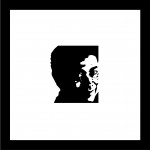



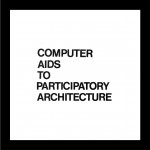
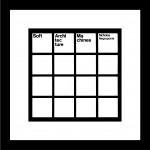
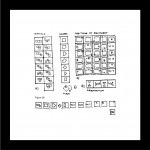
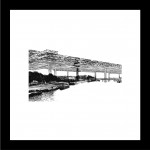
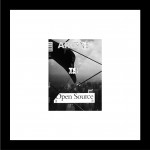
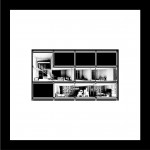
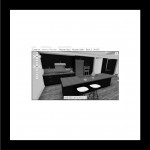
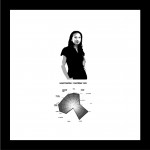
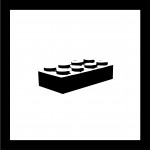
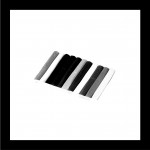
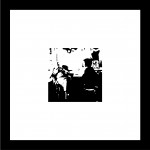

Recent Comments